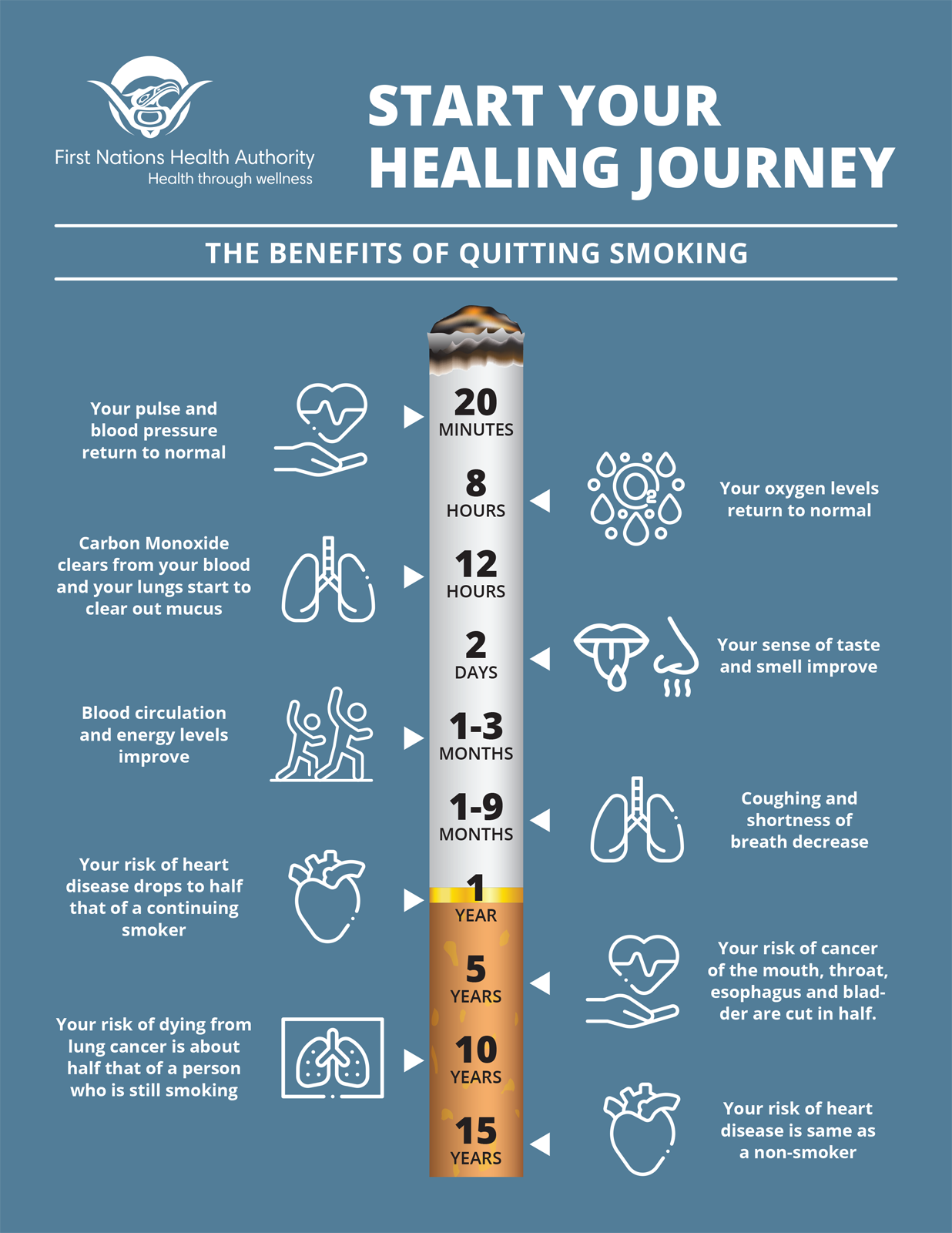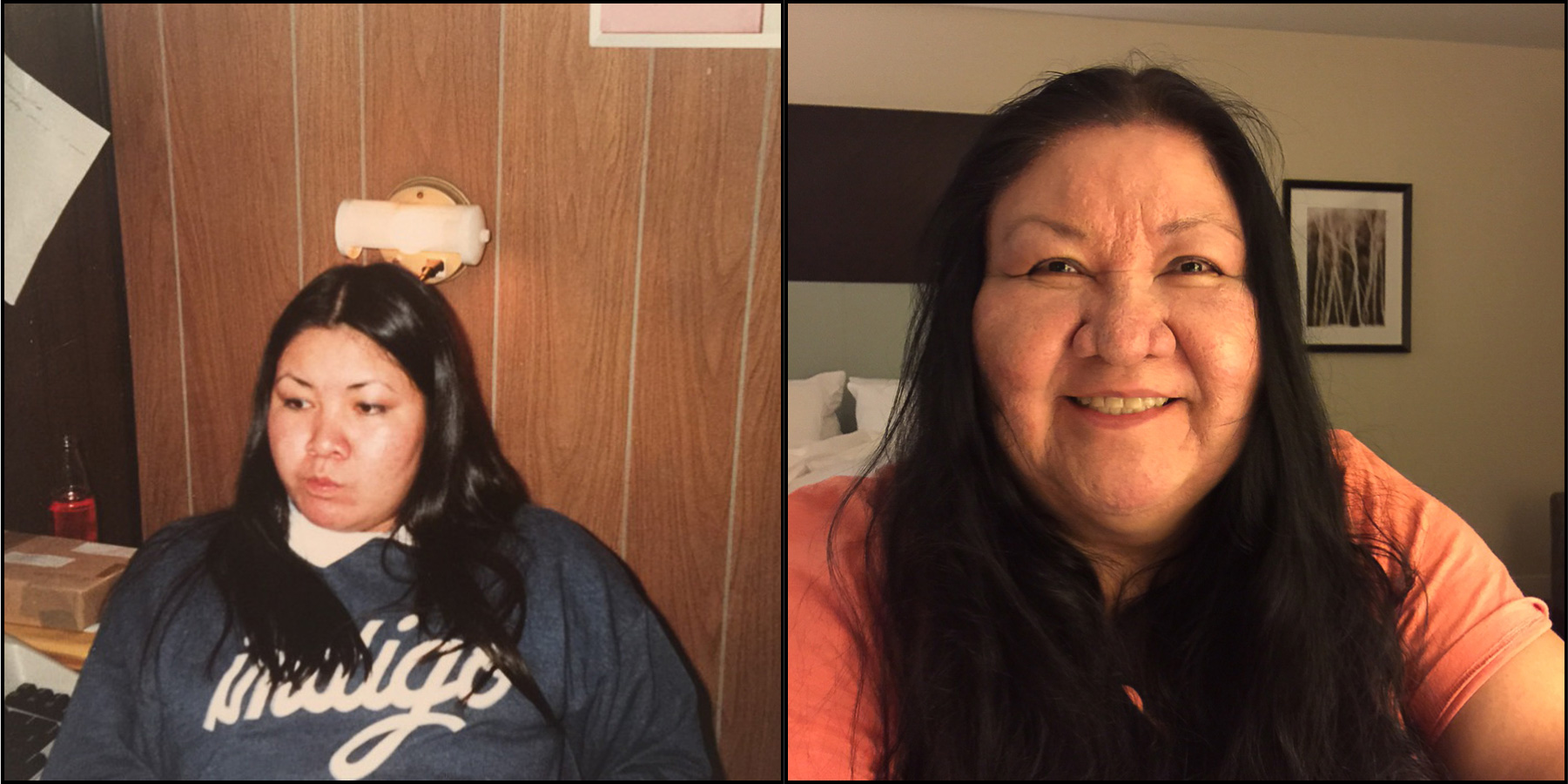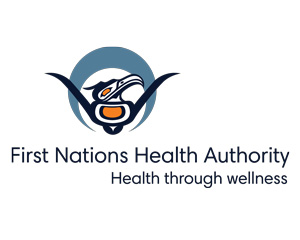Traditional and Commercial Tobacco: Understanding the Difference
For thousands of years, traditional tobacco has been an integral part of many First Nations cultures across BC and Canada.
The tobacco plant has many different names and uses among the First Nations in BC. For many Nations, tobacco is considered a sacred plant with immense healing and spiritual benefits and is often used for ceremony, prayer, and many other ways. For these reasons, the tobacco plant should be treated with great respect.
It is important to not confuse traditional tobacco and its sacred and ceremonial uses with commercial tobacco and the high rates of dependence and negative health impacts we see today.
Learn more about the differences between traditional and commercial tobacco using the resources below:
Learn more about the traditional uses of tobacco in this video:
Commercial Tobacco: Know the Health Risks
Second-Hand Smoke
E-Cigarettes (Vapes)
Second-Hand Aerosol
Nicotine Dependence
Nicotine and Youth
Second-hand smoke is the smoke that comes from the burning end of commercial cigarettes or tobacco. People who do not smoke but who are exposed to second-hand smoke, even for a short time, can suffer harmful health effects.
When you smoke inside your home or car, the smoke gets trapped in the fabric and carpets, causing it to linger for a long time – sometimes up to two years. This means that not only is the smoke harmful to anyone in the room at the time of smoking, but also anyone that comes into the room afterwards.
In adults who do not smoke, second-hand smoke exposure can cause coronary heart disease, stroke, lung cancer, and other diseases. It can also result in premature death.
In children, second-hand smoke is linked to ear infections, breathing problems and weakened immune systems. Second-hand smoke is also linked to higher risk of sudden infant death syndrome (SIDS) for infants who are exposed.
Learn more at:
E-Cigarettes are quickly growing in popularity across Canada. They are now extremely popular among youth and young adults. Up to a third of youth aged 15-19, and up to half of young adults aged 15-25 have tried vaping.
E-Cigarettes are not typically considered tobacco products because they do not contain tobacco. They contain synthetic (artificial) nicotine. Vaping can lead to dependence on nicotine.
Although we call e-cigarette byproduct “vapour", it is important to know that e-cigarettes produce aerosol. Aerosol is a mixture of small liquid particles suspended in a gas, compared to vapour, which is when the substance itself in gas form. Aerosols produced by vaping can leave tiny liquid droplets behind that contain chemicals and other substances on surfaces.
We are still studying and learning the exact impacts of vaping on human health. This is because there are many different factors that might impact health. Type of device, temperature setting, vaping liquid ingredients and quality, as well as individual vaping patterns might all impact health. Some of the chemicals and contaminants found in vaping aerosol are associated with negative health effects.
More research is needed to establish the risks of long-term vaping product use on developing cancer, cardiovascular, respiratory, and other diseases.
Vaping is particularly harmful for youth because it exposes them to nicotine while their brains are still developing. The tobacco industry relies on youth and young adults becoming dependent on nicotine products to continue to sell their products to future generations. Watch Elder Gerry Oleman share his message to youth about the tobacco industry:
Learn more about vaping at:
Vaping produces second-hand aerosol that is exhaled by people who vape. There is some evidence that vaping increases the level of nicotine and other chemicals in indoor air where someone is vaping, and that nicotine can be detected in the blood and urine of non-vapers exposed to second-hand aerosol.
The health effects of second-hand aerosol are still being studied. The risks are expected to be lower compared to second-hand smoke, but we are still learning more. Second hand aerosol may be especially harmful for children, who are still growing.
To keep others safe, it is recommended to vape outdoors and be careful about using vaping products around others.
Learn more at:
One of the main reasons people smoke, vape or use other commercial tobacco products – and why it is so hard to stop – is nicotine. Continued nicotine use over time creates dependency, where your body needs nicotine to feel normal. This is also known as nicotine addiction.
Nicotine can cause an increase in blood pressure, heart rate, flow of blood to the heart and narrowing of the arteries (vessels that carry blood). Nicotine may also contribute to the hardening of your artery walls, which may lead to a heart attack.
Nicotine can stay in your body for six to eight hours, depending on how often you smoke. When nicotine starts to leave your body, it can cause uncomfortable side effects known as withdrawal symptoms. These can include:
- Feeling irritable, jumpy, restless, or anxious
- Feeling sad or down
- Having trouble sleeping
- Having a hard time concentrating
- Feeling hungry
- Having an upset stomach
- Craving nicotine
Learn more at:
Nicotine is particularly harmful for youth because it can harm brain development and change brain chemistry. Human brains continue to grow until the age of 25, and nicotine use during teenaged and young adult years has been associated with lasting cognitive and behavioral challenges including:
- Impacts to memory
- Impacts to attention span
- Impacts to learning ability
Additionally, a young person can become dependent on nicotine at lower levels of exposure than adults. Once a young person is dependent on nicotine, it can be difficult for them to quit.
You can help prevent kids and teens from starting to use nicotine products like cigarettes, vapes, or nicotine pouches.
Learn more at:
Quitting Commercial Tobacco: Where to Start
Everybody has something to gain from quitting commercial tobacco – and the health benefits begin almost immediately. Even if you have been using commercial tobacco for many years, you can still improve your health by quitting today. There's also smelling better, looking better, feeling better and being richer! Plus, you'll be an amazing role model and leader to your family and community.

-
Step 1: Make a Plan
-
Step 2: Explore Quit Aids
-
Step 3: Try and Try Again
-
Helping Someone Else Quit
The first step toward quitting commercial tobacco for good is to decide that you want to go for it. Once you have made that decision, the next step is to make a plan.
Set a date, be aware of your triggers (things that make you want to smoke, such as morning coffee, hanging out with friends and so on) and prepare healthy snacks and other items to help you through your quit.
There are supports that can help you create a plan and stick to it:
-
Talk Tobacco: Offers culturally appropriate support about quitting smoking, vaping and commercial tobacco use to First Nations communities. You can get support by phone, text or live chat. Learn more
here.
-
Thinking of reducing or quitting smoking or vaping (Talk Tobacco double-sided postcard)
-
Quit now: Tips on creating a plan can be found on the website QuitNow.ca, BC's free quitting resource site. To get the best use of the site, create an account (it's free) and try out the Quit Plan tool, which walks you through each step of preparation you will need to quit smoking with success.
Quit aids, such as the patch, nicotine gum or prescription medicine can double your odds of successfully quitting. There are many different quit aids on the market but the two most popular are:
-
Nicotine Replacement Therapy(NRT): NRT products include nicotine patches, gum, lozenges, inhalers and mouth spray. They provide a clean way to get nicotine to reduce withdrawal symptoms. They are available at pharmacies without a prescription.
-
Prescription medication: Prescription medication for smoking cessation includes bupropion (Zyban), an antidepressant, and Varenicline (Chantix and Champix), which blocks the effect of nicotine on the brain. Both medicines require a prescription from a pharmacist, doctor or nurse practitioner. Talk to your health care provider to determine the best choice of treatment for you.
You may be eligible for free NRT products and prescription medication through the BC Smoking Cessation Program and FNHA Health Benefits. See the fact sheets below to learn about coverage for NRTs and prescription medications.
For questions about coverage, please contact FNHA Health Benefits (phone toll-free: 1-855-550-5454 or email: healthbenefits@fnha.ca).
If you are not successful the first time you try to quit, don't give up. It can take many serious attempts at quitting before a person becomes a lifetime non-smoker.
Learn from the experience and get back on track right away. Some people can quit on the first try and some people find it takes many attempts before they are successful.
It is your personal journey so do not give up, keep trying and you will get there.
If you want to support a family member, friend or loved one with their quitting journey, here are some tips and resources to help:
- Educate yourself on commercial tobacco risks, and on supports and resources to quit.
- Be supportive – this includes no nagging or pressuring the person trying to quit.
Stories about Tobacco Cessation
First Nations people have had a unique relationship with tobacco since time immemorial. When colonization occurred, it also changed our relationship with tobacco through the creation and popularization of commercial tobacco products. First Nations voices have many unique experiences with both traditional tobacco and tobacco cessation. Here are some of their stories.
Smokestack Sandra
Tobacco Nation
Smokestack Sandra is an FNHA tobacco-cessation podcast that shares the personal journey of a respected northern First Nations leader as she commits to quitting commercial cigarettes. The candid and humorous three-part podcast tracks Sandra Teegee, Deputy Chief of Takla Lake First Nation, over a series of weeks with personal stories and several guest speakers.
Smokestack Sandra podcast (SoundCloud)

(left) Sandra Teegee at 23, before she began smoking; (right) Sandra Teegee today
Tobacco Nation is a four-part podcast series featuring candid and moving stories about tobacco. All stories are told by First Nations people living in BC. The episodes explore tobacco through a unique lens: cancer, community, tradition and youth.
The podcast series includes cameos from First Nations surgeon and academic Dr. Nadine Caron, UBC's Dr. Lee Brown, FNHA former CEO Joe Gallagher, FNHA former Director of Mental Wellness Patricia Vickers and a number of other First Nations Elders and community members with compelling stories to share.
By touching on various aspects of tobacco use via personal stories, Tobacco Nation strives to begin the practice of sharing our personal experiences with tobacco to inform, educate and inspire one another.
These episodes are available on SoundCloud:
Tobacco Nation is hosted by Wawmeesh Hamilton, award-winning reporter and member of the Hupacasath First Nation in Port Alberni
Resources
If you have any questions about tobacco, please send an email to
respectingtobacco@fnha.ca
FNHA can share resources with First Nations communities, Health Centers, and organizations free of charge. To order resources, please fill out the PDF order form and email it to
respectingtobacco@fnha.ca

